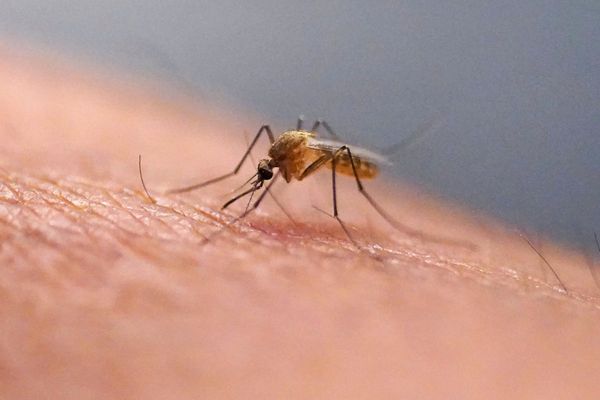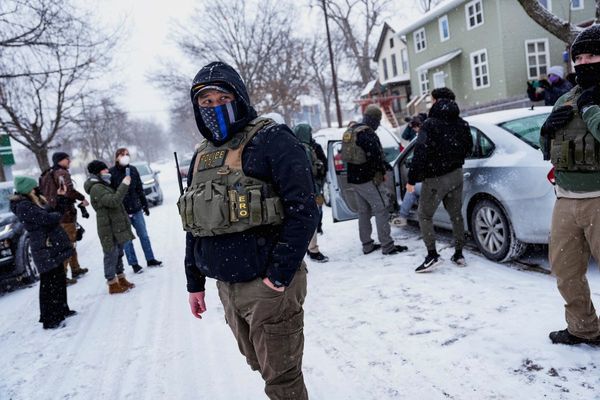
Since March 2017, the US Center for SafeSport has been charged by federal law to fight the scourge of sexual misconduct and other abuses in Olympic sports.
The Center has established well-regarded training courses and a national database of nearly 2,000 suspended coaches, athletes and other personnel. But it has also faced barrages of criticism from all corners – accusers who find it ineffective, accused parties who say it’s been weaponized, lawyers who prefer to let the US judicial system handle things, and lawmakers who occasionally fret but haven’t done much to make sure the Center it founded.
This week, the US Soccer Athletes’ Council added its concerns, sending a letter to Congress airing its issues with the Center. The Council represents current and recent national-team players in all types of soccer, not just household names like Alex Morgan (a Council member) but players in beach, futsal and disability events, and the letter has more than 100 signatories, including the entire 2023 Women’s World Cup team.
The Athletes’ Council is proud to join over 100 Athletes from U.S. Soccer as we call on Congress to reform SafeSport to ensure that athletes of all ages around the country are safe and protected from abuse. Together we can create lasting change. pic.twitter.com/5czQTdsXwF
— USSF Athletes’ Council (@USSF_Athletes) July 19, 2023
“SafeSport was created with noble and important intentions, but we believe that as it stands today, SafeSport is failing in what it was meant to achieve,” the athletes’ letter reads.
The athletes’ three complaints are:
1) SafeSport cases are frequently “administratively closed” with no resolution.
2) The Center’s exclusive jurisdiction over sexual misconduct cases and other cases of its choosing means that a federation – in this case, US Soccer – can’t investigate or take action of its own.
3) The appeals process triggers arbitration that, instead of merely reviewing what took place in the case, forces accusers to once again relive the events of the allegations. Then if the arbitrators rule in favor of the accused, the case is over, and the accused is free to continue without suspension.
The complaints echo the US Soccer Federation’s comments in a USA Today story in May, in which president Cindy Parlow Cone lamented restrictions that make it more difficult for the federation to suspend people if their cases have, for whatever reason, not gone forward.
Athletes’ Council chair Chris Ahrens said it was important for the athletes to speak up as well.
“For us at the Council, as the elected representatives of athletes within US Soccer, it was an opportunity for us to use that platform to affect positive change in this space,” Ahrens said. “It’s an issue that nobody can deny needs addressing.”
The letter isn’t just a complaint. It’s a call to action for the lawmakers who established the Center but haven’t stepped forward to give it more resources.
“We don’t think SafeSport is inherently evil or terrible,” Ahrens said. “We understand Congress has to do their part. I don’t think anyone can step within SafeSport and think they’re equipped to deal with the number of cases coming to them.”
The Center’s annual report paints a rosier picture. Yes, a lot of cases have been “administratively closed” – 4,800 of the 12,751 cases the Center has handled since its opening – but this designation is “most often used when a Claimant chooses not to participate in the process.” The Center doesn’t operate with a statute of limitations, so cases can always be reopened.
And the report suggests accused parties haven’t been frequently using arbitration to wriggle free from punishment. Out of 1,167 cases for which the accused can seek a “merits arbitration hearing,” only 67 have gone to arbitration, and only 12 failed to uphold any of the Center’s sanctions.
That said, the report says some of the other 55 cases have resulted in modified sanctions, and an ESPN report last year said 42% of those who appealed Center rulings were able to at least reduce their punishments.
“The arbitration is conducted by arbitrators who frequently have no experience in sexual abuse cases,” attorney John Manly said.
Advocacy group ChildUSA, in a statement provided to the Guardian, explicitly states a preference to go to court: “SafeSport from the beginning has suffered from its lack of transparency and slow process. So long as it operates through private arbitration especially by arbitrators inexperienced in the field, it cannot make the best decisions regarding which coaches to remove. It will never be as effective as the tried and true system that works for survivors from all institutions that cover up abuse: actual justice in the courts.”
Howard Jacobs, who has represented many accused parties in arbitration, argues otherwise, telling the Guardian: “The arbitrator’s job is to assess evidence, and their ability to do so fairly is in my opinion far more important than a tally of how many sexual abuse cases they have handled. I would rather have a neutral arbitrator with no sexual abuse experience than a biased arbitrator with lots.”
The uneasiness with the Center, though, isn’t just about arbitration. Jonathan Little, an Indianapolis lawyer who has represented many athletes in sexual abuse cases and has been a legal advisor to USA Badminton, says he has seen Center investigators actually get in the way of law-enforcement investigations.
And he agrees that the legal system may offer a better opportunity to address the situation.
“People need to be able to go to court and sue,” Little says. “The goal of SafeSport is to prevent that.”
That said, the Center and the SafeSport Code deal with some things that can’t be addressed in court. The Center may handle cases of emotional and physical misconduct, including bullying and harassment, or it may leave those matters in the hands of national governing bodies like US Soccer. Even in cases of sexual misconduct, for which the Center has exclusive jurisdiction, what passes for consensual sex in certain states may not be allowed under the SafeSport Code.
And still, people are indeed suing or seeking redress outside the SafeSport process, with mixed results. Within soccer, former US women’s national team player Justi Baumgardt sued youth soccer powerhouse Crossfire Premier after finding little relief from the Center over claims of sexual harassment from her tenure as a coach and parent within the club. The suit ended in an out-of-court settlement.
It’s not just the accusers. Accused parties have their own complaints as well, and they aren’t hesitating to take their complaints to court. So far, most of these suits have failed, and the decisions of the Center and arbitrators have been upheld. Even in cases in which the Center may have erred in how they listed someone in the disciplinary database, as in the case of boxing coach Ronald Harris, courts may find that anyone who sues the Center for slander has to prove actual malice, not just a mistake in the course of doing its investigative duty. (Harris has been removed from the database.)
But one case, filed Thursday in Michigan, is sure to keep a spotlight on the Center because of an ironic twist – one of the people suing the Center, a gymnastics coach whom the Center placed on probation, was one of the many gymnasts who reported abuse by Larry Nassar, the doctor whose decades of misconduct were a catalyst for action to protect athletes. Alexis Moore and her mother, Nanci, have sued in US district court, claiming that the Center punished them based on unfounded complaints by disgruntled parents. The suit takes aim at fundamental tenets of how SafeSport cases are handled, at one point stating a claim under antitrust law because “the Center has shown it has a dangerous probably [sic] of achieving monopoly powers, as it already controls the Database for banning all participation in any Olympic movement sport.”
“It’s a systemic problem across 83 governing bodies in sports in the US,” Moores’ lawyer Russell Prince told MLive Media Group.
The problem, as many of the Center’s critics would agree, is that things were certainly not better before SafeSport existed. To paraphrase Churchill’s thoughts on democracy, the SafeSport process is the worst one except all the others that have been tried.
Consider the case that threw the horrors of athlete abuse into the public eye gymnastics doctor Larry Nassar.
The FBI’s inaction in the case has drawn a rebuke from the US justice department’s inspector general and a $1bn lawsuit from Nassar accusers, including such well-known gymnasts as Simone Biles and Aly Raisman. Conversely, the FBI sprang into action to round up Shelby Garigen, an upstate New York soccer trainer, when a then-17-year-old player sent her naked pictures as a possible prelude to what would have been consensual sex under New York state law. The player has gone on to play soccer at an elite university, while Garigen is serving a 37-month prison sentence despite a persuasive appeal suggesting that, among other prosecutorial peculiarities, the young man’s well-connected parents had bulldozed their way into the proceedings in ways that are normally not allowed.
Little recognizes that the legal system is an imperfect path.
“But by and large, there are some very good police officers,” Little said.
The legal system can also be very slow to act. Consider the case of Juan Ramos, a Florida soccer trainer accused of having a long-term sexual relationship with an underage girl but has managed to tie up the legal system for more than six years. After one comical detour in which the Broward County clerk’s office was unaware that his lawyer had moved his office into a UPS Store until alerted by a journalist, Ramos was finally convicted of one charge, but his appeal is dragging in part because of miscommunication over court reporters’ responsibilities for producing transcripts.
NGBs and other organizations also haven’t been up to the task. USA Gymnastics president/CEO Steve Penny resigned in disgrace and faced criminal charges of his own, later dismissed, over his handling of the Nassar case. Other efforts can be simply muddled, such as a report by the National Women’s Soccer League and its players association on abuse in sports that has led to blistering criticism from coaches maligned therein – the report shrugged off testimony from players who disputed charges against former Houston coach James Clarkson, and Irish national team coach Vera Pauw is considering legal action. (In more effective action, the sexual misconduct and emotional abuse claims against coaches Paul Riley and Rory Dames that prompted the NWSL/NWSLPA report were also covered in a separate report conducted by former deputy US attorney general Sally Yates and commissioned by US Soccer, which has pledged to adopt the Yates Reports’ recommendations.)
Those governing bodies themselves are under threat as the USA goes through one of its periodic anti-establishment spasms. The genteel sport of curling has seen a split in which the national body kicked out the largest regional body, and many clubs opted to stick with the regional body rather than the national body, a move that wasn’t related to SafeSport but had the side effect of removing these clubs from the Center’s investigative umbrella. In swimming, a sport that has seen more than its share of sexual misconduct in the USA, some clubs are balking at perceived onerous regulations – including SafeSport training requirements – and casting their lot with the less rigorous AAU instead of USA Swimming.
As flawed as the institutions might be, operating outside them can be worse. A Tennessee soccer coach accused of raping children over a span of 20 years didn’t coach in US Soccer or the state association, leaving nothing in the way of institutional controls or even required training.
The institution with the most to say about the Center for SafeSport is Congress, which founded the Center but leaves most of its funding in the hands of the US Olympic and Paralympic Committee.
And it’s Congress that now has a letter to answer from the country’s top soccer players.







